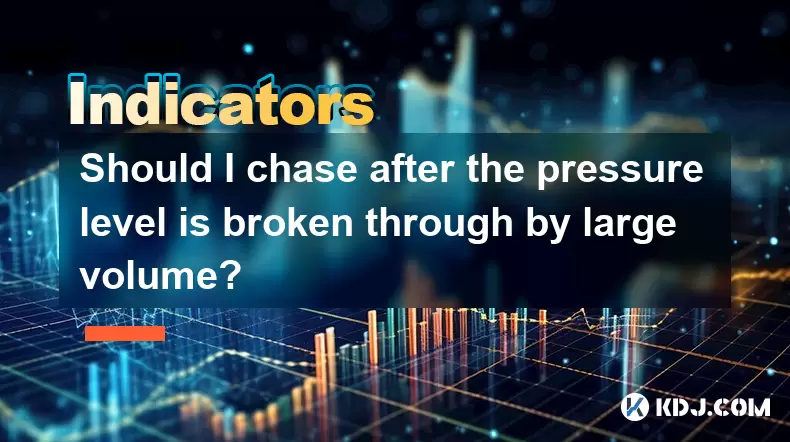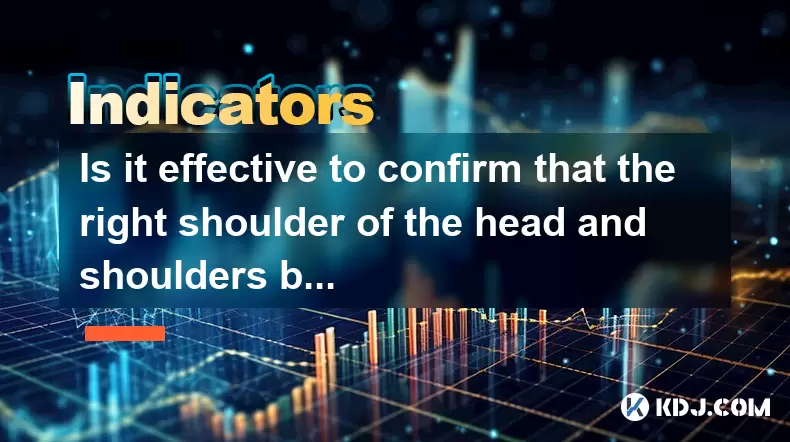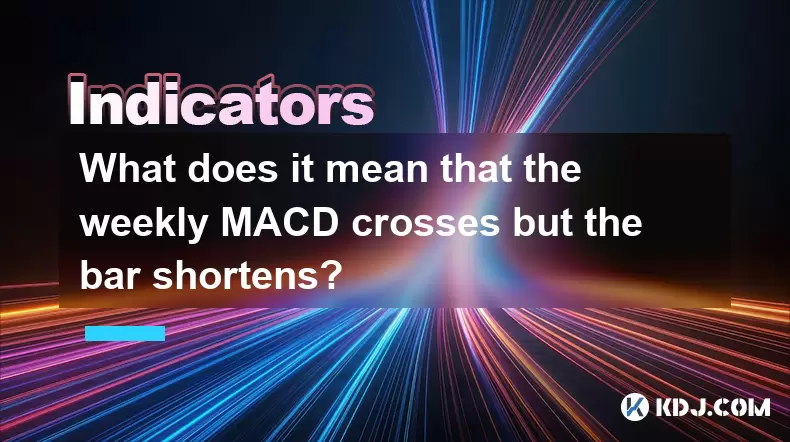-
 Bitcoin
Bitcoin $106,754.6083
1.33% -
 Ethereum
Ethereum $2,625.8249
3.80% -
 Tether USDt
Tether USDt $1.0001
-0.03% -
 XRP
XRP $2.1891
1.67% -
 BNB
BNB $654.5220
0.66% -
 Solana
Solana $156.9428
7.28% -
 USDC
USDC $0.9998
0.00% -
 Dogecoin
Dogecoin $0.1780
1.14% -
 TRON
TRON $0.2706
-0.16% -
 Cardano
Cardano $0.6470
2.77% -
 Hyperliquid
Hyperliquid $44.6467
10.24% -
 Sui
Sui $3.1128
3.86% -
 Bitcoin Cash
Bitcoin Cash $455.7646
3.00% -
 Chainlink
Chainlink $13.6858
4.08% -
 UNUS SED LEO
UNUS SED LEO $9.2682
0.21% -
 Avalanche
Avalanche $19.7433
3.79% -
 Stellar
Stellar $0.2616
1.64% -
 Toncoin
Toncoin $3.0222
2.19% -
 Shiba Inu
Shiba Inu $0.0...01220
1.49% -
 Hedera
Hedera $0.1580
2.75% -
 Litecoin
Litecoin $87.4964
2.29% -
 Polkadot
Polkadot $3.8958
3.05% -
 Ethena USDe
Ethena USDe $1.0000
-0.04% -
 Monero
Monero $317.2263
0.26% -
 Bitget Token
Bitget Token $4.5985
1.68% -
 Dai
Dai $0.9999
0.00% -
 Pepe
Pepe $0.0...01140
2.44% -
 Uniswap
Uniswap $7.6065
5.29% -
 Pi
Pi $0.6042
-2.00% -
 Aave
Aave $289.6343
6.02%
Should I chase after the pressure level is broken through by large volume?
In crypto trading, pressure levels are key price points where supply and demand meet; chasing a breakout depends on risk tolerance and market conditions.
Jun 08, 2025 at 03:35 am

Understanding Pressure Levels in Cryptocurrency Trading
In the world of cryptocurrency trading, pressure levels are critical points on a price chart that represent significant buying or selling activity. These levels are often seen as barriers that, when broken, can signal potential shifts in market trends. One common question traders ask is whether they should chase a cryptocurrency after a pressure level has been broken through by large volume. To address this, we need to delve into the mechanics of pressure levels, the significance of volume, and the implications of chasing a breakout.
What Are Pressure Levels?
Pressure levels, also known as support and resistance levels, are key price points where the forces of supply and demand meet. Support levels are prices at which a downtrend can be expected to pause due to a concentration of demand. Conversely, resistance levels are prices at which an uptrend can be expected to pause due to a concentration of supply. When these levels are broken through, it often indicates a strong market sentiment shift.
The Role of Volume in Breaking Pressure Levels
Volume is a crucial indicator in trading because it provides insights into the strength of a price move. When a pressure level is broken with large volume, it suggests that there is significant interest and participation in the market move. High volume at a breakout can indicate that the new trend has the momentum to continue, making it a potentially attractive entry point for traders.
Should You Chase a Breakout?
Chasing a breakout means entering a trade after a pressure level has been broken, often at a higher price than the initial breakout point. The decision to chase a breakout depends on several factors, including the trader's risk tolerance, market conditions, and the specific cryptocurrency in question.
Risk Tolerance: Traders with a higher risk tolerance might be more inclined to chase a breakout, hoping to capitalize on the momentum. However, this comes with the risk of entering the trade too late, potentially leading to a quick reversal and losses.
Market Conditions: In a strong bull market, chasing breakouts might be more successful as the overall trend supports continued upward movement. Conversely, in a volatile or bearish market, the risk of a false breakout increases.
Cryptocurrency Specifics: Different cryptocurrencies may have different levels of volatility and liquidity, affecting the reliability of breakouts. Highly liquid assets like Bitcoin might offer more reliable breakouts compared to smaller altcoins.
Strategies for Chasing Breakouts
If you decide to chase a breakout, it's essential to have a well-defined strategy to manage your trades effectively. Here are some steps you might consider:
Confirm the Breakout: Before entering a trade, ensure the breakout is genuine. Look for a clear break above the resistance level, accompanied by high volume. A false breakout often lacks this volume confirmation.
Set Entry and Exit Points: Determine your entry point after the breakout has been confirmed. Set clear exit points, including stop-loss orders to limit potential losses and take-profit levels to secure gains.
Monitor the Trade: Keep an eye on the market conditions and the cryptocurrency's performance. Be ready to adjust your strategy if the market moves against your position.
Use Technical Indicators: Employ technical indicators such as moving averages, RSI, and MACD to gain additional insights into the strength and direction of the trend.
Potential Risks of Chasing Breakouts
While chasing breakouts can be profitable, it comes with several risks that traders must be aware of:
Whipsaws: A false breakout, or whipsaw, occurs when the price breaks through a level but quickly reverses, trapping traders who chased the breakout.
Overpaying: Entering a trade after a breakout means buying at a higher price, which can reduce potential profits or increase the risk of a loss if the price retraces.
Emotional Trading: Chasing breakouts can lead to impulsive decisions driven by fear of missing out (FOMO), which can cloud judgment and lead to poor trading outcomes.
Practical Example of Chasing a Breakout
To illustrate how to chase a breakout, let's consider a hypothetical scenario with Bitcoin:
Identify the Pressure Level: Suppose Bitcoin has been trading around a resistance level of $50,000 for several weeks.
Monitor Volume: You notice that Bitcoin breaks above $50,000 with significantly higher volume than usual, suggesting strong buying interest.
Confirm the Breakout: You wait for the price to close above $50,000 for at least one hour to confirm the breakout.
Enter the Trade: After confirmation, you enter a long position at $50,500, slightly above the breakout level.
Set Stop-Loss and Take-Profit: You set a stop-loss at $49,500 to limit potential losses and a take-profit at $52,000 to secure gains.
Monitor and Adjust: You keep an eye on the market and adjust your stop-loss as the price moves in your favor, trailing it to lock in profits.
Frequently Asked Questions
Q1: How can I differentiate between a true breakout and a false breakout?
A1: A true breakout is typically accompanied by high volume and sustained price movement above the pressure level. A false breakout, on the other hand, often lacks volume confirmation and quickly reverses back below the level. Using technical indicators like the RSI and MACD can also help confirm the strength of the breakout.
Q2: What timeframes are best for identifying pressure levels and breakouts?
A2: Pressure levels and breakouts can be identified on various timeframes, but the reliability of the signals can differ. Shorter timeframes like 15-minute or 1-hour charts can provide more frequent trading opportunities but may result in more false breakouts. Longer timeframes like daily or weekly charts offer more reliable signals but fewer trading opportunities.
Q3: Can chasing breakouts be a part of a long-term investment strategy?
A3: Chasing breakouts is generally considered a short-term trading strategy due to its focus on capturing quick price movements. However, it can be integrated into a long-term investment strategy by using breakouts as entry points for positions that are held for longer periods, provided the trader has a clear plan for managing those positions.
Q4: How important is it to use stop-loss orders when chasing breakouts?
A4: Using stop-loss orders is crucial when chasing breakouts. Since entering a trade after a breakout can result in buying at a higher price, a stop-loss order helps limit potential losses if the breakout fails. It's a key risk management tool that can protect your capital and allow you to trade more confidently.
Disclaimer:info@kdj.com
The information provided is not trading advice. kdj.com does not assume any responsibility for any investments made based on the information provided in this article. Cryptocurrencies are highly volatile and it is highly recommended that you invest with caution after thorough research!
If you believe that the content used on this website infringes your copyright, please contact us immediately (info@kdj.com) and we will delete it promptly.
- 2025-W Uncirculated American Gold Eagle and Dr. Vera Rubin Quarter Mark New Products
- 2025-06-13 06:25:13
- Ruvi AI (RVU) Leverages Blockchain and Artificial Intelligence to Disrupt Marketing, Entertainment, and Finance
- 2025-06-13 07:05:12
- H100 Group AB Raises 101 Million SEK (Approximately $10.6 Million) to Bolster Bitcoin Reserves
- 2025-06-13 06:25:13
- Galaxy Digital CEO Mike Novogratz Says Bitcoin Will Replace Gold and Go to $1,000,000
- 2025-06-13 06:45:13
- Trust Wallet Token (TWT) Price Drops 5.7% as RWA Integration Plans Ignite Excitement
- 2025-06-13 06:45:13
- Ethereum (ETH) Is in the Second Phase of a Three-Stage Market Cycle
- 2025-06-13 07:25:13
Related knowledge

How to interpret the low opening the next day after the long lower shadow hits the bottom?
Jun 18,2025 at 12:22am
Understanding the Long Lower Shadow Candlestick PatternIn technical analysis, a long lower shadow candlestick is often seen as a potential reversal signal in a downtrend. This pattern occurs when the price opens, trades significantly lower during the session, but then recovers to close near the opening price or slightly above. The long wick at the botto...

How to operate the RSI indicator repeatedly in the 40-60 range?
Jun 18,2025 at 12:56am
Understanding the RSI Indicator and Its RelevanceThe Relative Strength Index (RSI) is a momentum oscillator widely used in cryptocurrency trading to measure the speed and change of price movements. Typically, the RSI ranges from 0 to 100, with levels above 70 considered overbought and below 30 considered oversold. However, when the RSI repeatedly stays ...

How strong is the MACD golden cross below the zero axis?
Jun 17,2025 at 11:00pm
Understanding the MACD Indicator in Cryptocurrency TradingThe Moving Average Convergence Divergence (MACD) is one of the most widely used technical indicators among cryptocurrency traders. It helps identify potential trend reversals, momentum shifts, and entry or exit points. The MACD consists of three main components: the MACD line, the signal line, an...

How effective is the golden cross of the William indicator double line in the oversold area?
Jun 17,2025 at 11:56pm
Understanding the William Indicator and Its Double Line SetupThe William %R (Williams Percent Range) is a momentum oscillator used to identify overbought or oversold conditions in a market. It ranges from 0 to -100, with readings above -20 considered overbought and below -80 deemed oversold. The double line setup refers to plotting two different timefra...

Is it effective to confirm that the right shoulder of the head and shoulders bottom volume at the 30-minute level is enlarged?
Jun 17,2025 at 11:42pm
Understanding the Head and Shoulders Pattern in Cryptocurrency TradingThe head and shoulders pattern is one of the most recognized reversal patterns in technical analysis, especially within cryptocurrency trading. It typically signals a potential shift from a bullish trend to a bearish one. This pattern consists of three peaks: the left shoulder, the he...

What does it mean that the weekly MACD crosses but the bar shortens?
Jun 18,2025 at 01:07am
Understanding the MACD IndicatorThe Moving Average Convergence Divergence (MACD) is a popular technical analysis tool used in cryptocurrency trading to identify potential trend reversals and momentum shifts. It consists of three main components: the MACD line, the signal line, and the histogram (also known as the bar). The MACD line is calculated by sub...

How to interpret the low opening the next day after the long lower shadow hits the bottom?
Jun 18,2025 at 12:22am
Understanding the Long Lower Shadow Candlestick PatternIn technical analysis, a long lower shadow candlestick is often seen as a potential reversal signal in a downtrend. This pattern occurs when the price opens, trades significantly lower during the session, but then recovers to close near the opening price or slightly above. The long wick at the botto...

How to operate the RSI indicator repeatedly in the 40-60 range?
Jun 18,2025 at 12:56am
Understanding the RSI Indicator and Its RelevanceThe Relative Strength Index (RSI) is a momentum oscillator widely used in cryptocurrency trading to measure the speed and change of price movements. Typically, the RSI ranges from 0 to 100, with levels above 70 considered overbought and below 30 considered oversold. However, when the RSI repeatedly stays ...

How strong is the MACD golden cross below the zero axis?
Jun 17,2025 at 11:00pm
Understanding the MACD Indicator in Cryptocurrency TradingThe Moving Average Convergence Divergence (MACD) is one of the most widely used technical indicators among cryptocurrency traders. It helps identify potential trend reversals, momentum shifts, and entry or exit points. The MACD consists of three main components: the MACD line, the signal line, an...

How effective is the golden cross of the William indicator double line in the oversold area?
Jun 17,2025 at 11:56pm
Understanding the William Indicator and Its Double Line SetupThe William %R (Williams Percent Range) is a momentum oscillator used to identify overbought or oversold conditions in a market. It ranges from 0 to -100, with readings above -20 considered overbought and below -80 deemed oversold. The double line setup refers to plotting two different timefra...

Is it effective to confirm that the right shoulder of the head and shoulders bottom volume at the 30-minute level is enlarged?
Jun 17,2025 at 11:42pm
Understanding the Head and Shoulders Pattern in Cryptocurrency TradingThe head and shoulders pattern is one of the most recognized reversal patterns in technical analysis, especially within cryptocurrency trading. It typically signals a potential shift from a bullish trend to a bearish one. This pattern consists of three peaks: the left shoulder, the he...

What does it mean that the weekly MACD crosses but the bar shortens?
Jun 18,2025 at 01:07am
Understanding the MACD IndicatorThe Moving Average Convergence Divergence (MACD) is a popular technical analysis tool used in cryptocurrency trading to identify potential trend reversals and momentum shifts. It consists of three main components: the MACD line, the signal line, and the histogram (also known as the bar). The MACD line is calculated by sub...
See all articles

























































































